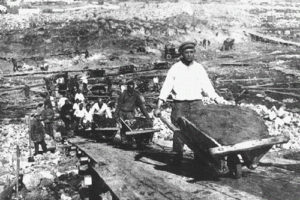GULAG was Not Something Far Away in Siberia: It was All Around Even in Moscow

(Paul Goble – Window on Eurasia – Staunton, October 29, 2018)
Today, Russians of good will paused to remember those who had suffered and died in Stalin’s GULAG. This commemoration took many forms but one of the most significant risks being lost: a new map of “The GULAG in Moscow” shows that Stalin’s camps and torture places were not somewhere far away as some imagine but everywhere.
In Moscow alone, the map shows there were 190 GULAG facilities. There were 174 forced labor locations, 121 sharashkas where imprisoned scientists were forced to work for the state, and 27 sites listed under the category “concentration camps and houses of arrest.” (For the map, see topos.memo.ru/.)
Such maps which are only beginning to be prepared are important for two reasons. On the one hand, they are a reminder of the fact that the GULAG wasn’t some distant phenomenon which many people could easily ignore if they just went about their business but rather something embedded in their lives regardless of where they lived.
And on the other, they suggest that just as the prisons were nearby, so too were the investigators, the sham courts, and the jailors. They too were part of the ordinary scene of life in Stalin’s Soviet Union – and just as some of the victims and their descendants have survived, so too have many of them.
Thus, the new geography of the GULAG is essential for all those who want to know what has happened in that part of the world and for those who want to make sure that it doesn’t return. Its evil was not secreted away; it was everywhere. And those who seek to deny or justify it do not have a leg to stand on.
[article also appeared at windowoneurasia2.blogspot.com/2018/10/gulag-was-not-something-far-away-in.html]
[featured image is file photo]
